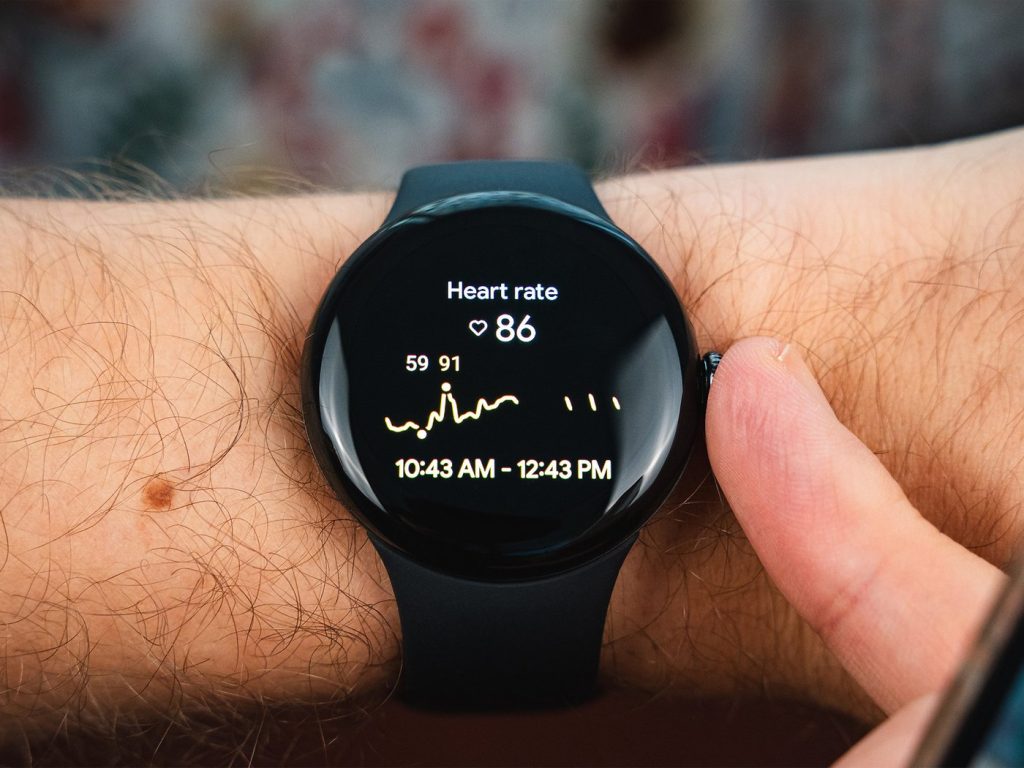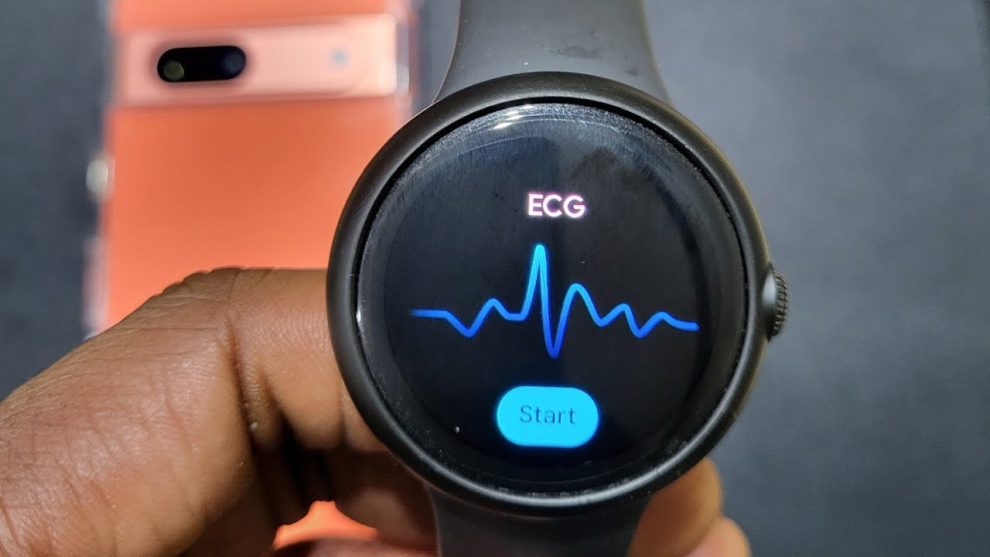The Google Pixel Watch 2 introduces a game-changing feature: the ability to take an electrocardiogram (ECG) right from your wrist. This non-invasive technology provides a window into your heart rhythm, potentially identifying signs of atrial fibrillation (AFib) and other irregularities. In this comprehensive guide, we’ll walk you through how to set up and use the ECG app on your Pixel Watch 2, interpret your results, and share findings with your doctor.
Before You Begin: What You Need to Know About ECGs
While the Pixel Watch 2’s ECG app is a powerful tool, it’s essential to understand its capabilities and limitations. The app is designed to detect potential heart rhythm abnormalities, but it is not a substitute for professional medical diagnosis. Always consult with your doctor if you experience concerning symptoms like heart palpitations, chest pain, or shortness of breath.
The ECG app works by analyzing your heart rhythm for 30 seconds. After the analysis, you’ll receive one of the following results:
- Sinus Rhythm: Indicates a normal heart rhythm.
- Atrial Fibrillation: Suggests the presence of AFib, a common heart arrhythmia.
- Inconclusive: The app couldn’t determine a clear result, possibly due to factors like movement or improper watch placement.
Remember, the ECG app is for informational purposes only. Always discuss your results with your doctor for a proper diagnosis and treatment plan.
Setting Up the ECG App on Your Pixel Watch 2
Before taking your first ECG, you’ll need to set up the app on your Pixel Watch 2. Here’s how:
- Open the Fitbit app on your phone. The Pixel Watch 2 uses Fitbit’s health tracking technology, so ensure the app is installed and paired with your watch.
- Navigate to the “Discover” tab in the Fitbit app.
- Scroll down and tap on the “ECG” tile.
- Follow the on-screen instructions to complete the setup process. This may involve entering your date of birth, sex, and agreeing to terms and conditions.
Once you’ve completed the setup, you’re ready to take your first ECG.

How to Take an ECG with Your Pixel Watch 2
Taking an ECG with your Pixel Watch 2 is a simple process. Follow these steps for optimal results:
- Find a quiet, comfortable spot to sit. Avoid any movements that could interfere with the reading.
- Position your Pixel Watch 2 snugly on your wrist, about one finger-width above your wrist bone.
- Open the ECG app on your watch.
- Rest your arm on a table or your lap, and place your opposite hand’s index finger and thumb on the watch’s bezel (the metal ring surrounding the display).
- Remain still for 30 seconds while the app records your ECG. You’ll see a countdown on the watch screen.
- After 30 seconds, the app will analyze your heart rhythm. This may take a few moments.
- Your ECG result will appear on the watch screen. Tap “Done” to exit the app.
If you receive an “Inconclusive” result, try taking another ECG, ensuring proper watch placement and remaining still throughout the recording.
Understanding Your ECG Results
The ECG app will display one of three possible results:
- Sinus Rhythm: This indicates a normal heart rhythm. While it’s always good to share results with your doctor, a sinus rhythm typically doesn’t require immediate action.
- Atrial Fibrillation: If the app detects signs of AFib, it’s crucial to consult with your doctor. AFib is a serious condition that can increase your risk of stroke and other complications. Your doctor may recommend additional testing or treatment.
- Inconclusive: An inconclusive result means the app couldn’t determine a clear result. This could be due to factors like movement during the recording or a heart rate that’s too high or low for the app to analyze. If you consistently receive inconclusive results, discuss this with your doctor.
Remember, the ECG app is not perfect. It may not detect all instances of AFib or other arrhythmias. If you experience symptoms like heart palpitations, chest pain, or shortness of breath, contact your doctor, even if your ECG results appear normal.
Sharing ECG Results with Your Doctor
Sharing your ECG results with your doctor is an essential part of using the Pixel Watch 2’s ECG app. Your doctor can provide a professional interpretation of your results and determine if further testing or treatment is necessary.
To share your ECG results:
- Open the Fitbit app on your phone.
- Tap on the “Discover” tab, then select “ECG.”
- Choose the ECG recording you want to share.
- Tap the “Share” button and select your preferred sharing method (e.g., email, print).
- Send the results to your doctor or bring a printed copy to your next appointment.
When discussing your ECG results with your doctor, be sure to mention any symptoms you experienced during the recording, as well as any other relevant health information.
Tips for Accurate ECG Readings
To ensure the most accurate ECG readings from your Pixel Watch 2, keep these tips in mind:
- Proper watch placement: Ensure your watch is snug against your wrist, about one finger-width above your wrist bone.
- Avoid movement: Remain still during the 30-second recording. Movement can interfere with the app’s ability to analyze your heart rhythm.
- Dry skin: If your skin is too dry, it may affect the ECG app’s sensors. Apply a small amount of lotion to your wrist before taking an ECG.
- Consistent readings: For the most reliable results, try to take ECGs at the same time each day, under similar conditions.
When Not to Use the ECG App
While the Pixel Watch 2’s ECG app is suitable for most adults, there are some situations where it should not be used:
- Pacemakers and other implanted devices: If you have a pacemaker, implantable cardioverter defibrillator (ICD), or other implanted electronic device, consult with your doctor before using the ECG app.
- Diagnosed heart conditions: If you have a diagnosed heart condition, discuss the appropriateness of using the ECG app with your doctor.
- Pregnancy: The safety and effectiveness of the ECG app during pregnancy have not been established. Consult with your doctor before use.
The Future of Wearable ECG Technology
The Google Pixel Watch 2’s ECG app represents a significant step forward in wearable health technology. As smartwatches continue to advance, we can expect to see even more sophisticated heart health features, such as continuous ECG monitoring and advanced arrhythmia detection.
However, it’s essential to remember that wearable ECG technology is not a replacement for professional medical care. Always use devices like the Pixel Watch 2 in conjunction with regular check-ups and open communication with your doctor.
Conclusion
The Google Pixel Watch 2’s ECG app offers a convenient, non-invasive way to monitor your heart health from your wrist. By following the steps outlined in this guide, you can set up the app, take accurate ECG readings, interpret your results, and share findings with your doctor.
Remember, while the ECG app is a valuable tool, it’s not a substitute for professional medical advice. If you have concerns about your heart health, always consult with your doctor.
With the power of wearable ECG technology at your fingertips, you can take a proactive approach to your heart health and work towards a healthier, happier future.
















Add Comment